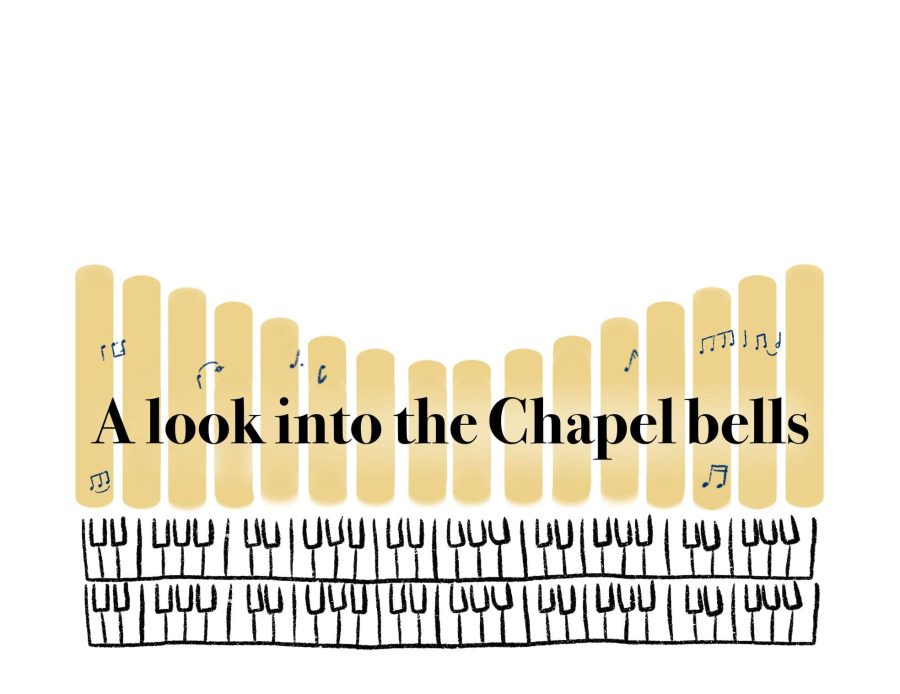“It’s like the equivalent of rocket science in the medieval world.”
This is how Janean Hall, the Enid and Henry Woodward College Organist and Senior Lecturer of harpsichord and organ, describes the Chapel organ—which can be heard projected through a carillon everyday, at 11:57 a.m.; as not to conflict with the bells at Willis, which ring on the hour.
The original organ of Skinner Chapel was built at the same time as the chapel itself in 1916. When Hall came to Carleton in 1994, that organ had been in disrepair.
“If you can imagine, three thousand pipes need a lot of attention… and the thing about the pipes is that they are made from various types of steel and tin mixture. Some of them are even made from wood or other metals—the slightest amount of temperature change would cause them to go out of tune,” said Hall.
Because the chapel lacked air conditioning or humidity control until 2018, Hall was required to spend copious amounts of time tuning the organ. According to College Chaplain Carolyn Fure-Slocum, the music department historically tried to hire organ students to play three days a week before convocation and common times, “but it just got hard to make sure there was always a student because it is such a short time.”
A result of these two inconveniences combined, the projection of the organ was sporadic at best—until two renovations in 2015 and 2018.
In 2015, an HVAC system was installed in the chapel, allowing less time to be spent on the tedious tuning of the organ and more time to be spent playing and teaching it. According to Fure-Slocum, the installation of an HVAC system “made it possible to put money into the organ because otherwise it goes out of tune.”
Three years later, in 2018, major renovations were done to the chapel that included an entirely new organ and the installation of a carillon.
“We had some major organ builders come to take a look at it and talk about ideas,” Fure-Slocum recalled. She described how the new organ is “built into the building and is down in the basement, so there are three levels of organ pipes behind the altar.” The sounds from four different sets of pipes are projected from different parts of the chapel, so that different pitches and octaves come from different areas.
In addition to the new organ, the 2018 renovation included the installation of a carillon. Carleton’s carillon is different from a typical carillon, as Fure-Solcum notes: “a real carillon would be actually played like bells. But they put in basically a recording device.” This device comes with a database of over two thousand songs, and it was left up to Hall to pick and program which songs would be projected every day, right before noon.
Another convenient feature of the carillon is that it can also be connected directly to the organ, so Hall can play and project the organ live on special occasions. During convocations, graduations—or recently, the inauguration of President Byerly—Hall has connected the organ to the carillon and projected her live playing.
“I’ve never played for the inauguration for a new president, so that was a joy and a big deal,” Hall said, describing the experience. For the inauguration, she played Carleton’s alma mater and several standard classic songs, including a song from Beethoven’s Night Symphony. Before these big events, Hall confers with the organizers on what songs they would like to hear, but the three – minute tunes that they play every day before noon are entirely up to her and Fure – Slocum.
“You shouldn’t hear the same song for 10 weeks twice,” Hall said. “I programmed about 80 songs in there, and they just play, so I never know what song will play that day.” Sometimes, the songs just happen to align themselves with the weather: “One day when it was raining, ‘Raindrops Keep Falling on my Head’ started playing. It was perfect timing.”
On the types of songs that are selected, Fure-Slocum said that they, “tried to avoid most religious tunes although a lot of folk songs are also based on religious hymns, so there are certainly things that get played that are hymns.”
Hall added, “I tried to pick what I thought might reflect the college environment with a little bit of my personality… I like Bach, so you might hear Bach pieces played. I also like musical theatre and I’m a Beatles fan.” Hall also tries to stick to songs that she thinks most people have heard—like common folk music or something from Simon and Garfunkel.
Hall can also add songs not otherwise in the database by recording herself playing the organ and adding them. Hall used this method to program a Beach Boys song into the system, given that former President Steven Poskanzer was a fan.
Since there is no audible difference between when the carillon is projecting a recording and when the organ is being played live, Hall also occasionally plays live when there is a song particularly suitable for the day. Hall recalled one day when it was snowing heavily: “I played ‘Let it Snow.’ No one realizes I’m doing it live, so I can really just insert something.”
What may have become background music to the daily proceedings of student, faculty and staff, has been a labor of love for Hall and Fure-Slocum, who have put great thought and work into the songs chosen to be projected from the chapel’s tower.
“Hopefully it brings a smile to students’ faces when they hear something,” Hall wishes.












